Time Keeping
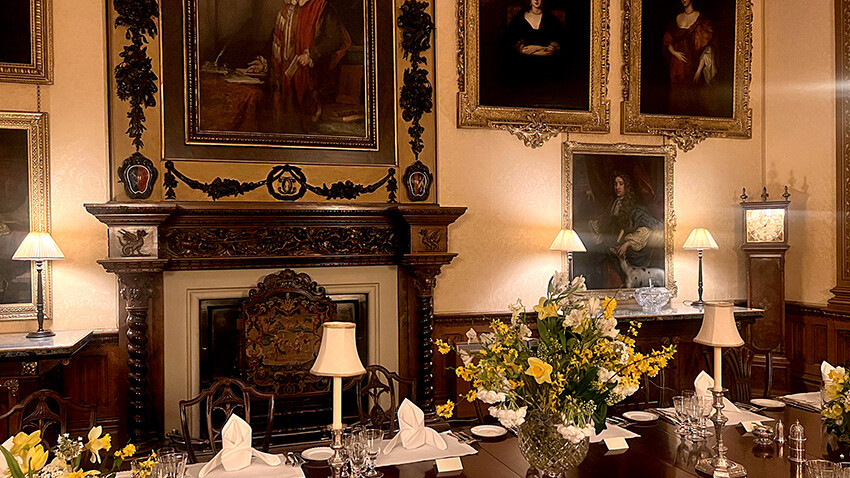
Time Keeping
 Highclere has both longcase clocks and clocks on mantelshelves and tables. Clocks from Germany and France and of course England. One of the most remarkable pendulum long case clocks sits in the corner of the Dining Room. I am quite sure you might have noticed it in the background whether on a tour or on tv in Downton Abbey or enjoyed the detail of it in Friends of Highclere. It was made by John Shelton about 280 years ago and is both truly beautiful and rare but also a practical work of art.
Highclere has both longcase clocks and clocks on mantelshelves and tables. Clocks from Germany and France and of course England. One of the most remarkable pendulum long case clocks sits in the corner of the Dining Room. I am quite sure you might have noticed it in the background whether on a tour or on tv in Downton Abbey or enjoyed the detail of it in Friends of Highclere. It was made by John Shelton about 280 years ago and is both truly beautiful and rare but also a practical work of art.
 Over the centuries, measuring time has absorbed some of humanity’s finest minds. One of the first designs for a clock that worked using a pendulum was made by the Italian Galileo Galilei (1564-1642). Before the pendulum, clocks had used turning wheels but the mechanism was unreliable and tended to lose time. The Dutchman Chritiaan Huygens (1629-1695) made the first working pendulum clock in 1657. It only lost a maximum of 15 seconds per day and thus immensely increased the accuracy of timekeeping.
Over the centuries, measuring time has absorbed some of humanity’s finest minds. One of the first designs for a clock that worked using a pendulum was made by the Italian Galileo Galilei (1564-1642). Before the pendulum, clocks had used turning wheels but the mechanism was unreliable and tended to lose time. The Dutchman Chritiaan Huygens (1629-1695) made the first working pendulum clock in 1657. It only lost a maximum of 15 seconds per day and thus immensely increased the accuracy of timekeeping. Often referred to as the “time of tremendous enlightenment” these decades would lead to advances in the measurement of time which would eventually allow Isaac Newton to time his experiments with gravity.
However, pendulum clocks do not work at sea and the problem of knowing where ships and their crews were was considered so important that, in 1714, the British government passed the Longitude Act offering a financial reward of up to £20,000 (perhaps £10 million today) to solve the problem. John Harrison was a carpenter by trade who taught himself clock making. He built his first longcase clock in 1713 at the age of 20 where the mechanism was made entirely of wood. During the mid-1720s he designed a series of remarkable precision longcase clocks which achieved an accuracy of one second in a month, far better than any other clocks of the time.
Often referred to as the “time of tremendous enlightenment” these decades would lead to advances in the measurement of time which would eventually allow Isaac Newton to time his experiments with gravity.
However, pendulum clocks do not work at sea and the problem of knowing where ships and their crews were was considered so important that, in 1714, the British government passed the Longitude Act offering a financial reward of up to £20,000 (perhaps £10 million today) to solve the problem. John Harrison was a carpenter by trade who taught himself clock making. He built his first longcase clock in 1713 at the age of 20 where the mechanism was made entirely of wood. During the mid-1720s he designed a series of remarkable precision longcase clocks which achieved an accuracy of one second in a month, far better than any other clocks of the time.
 In order to solve the problem of longitude, Harrison aimed to devise a portable clock which kept time to within three seconds a day which would make it far more accurate than even the best watches of the time. In May 1736, Harrison and H1 were taken aboard HM ship Centurion, which was about to set sail for Lisbon. It had good results and led to H2, H3 and H4, Harrison's masterpiece – an instrument of beauty, resembling an oversize pocket watch from the period. It is engraved with Harrison's signature, marked Number 1 and dated AD 1759.
In order to solve the problem of longitude, Harrison aimed to devise a portable clock which kept time to within three seconds a day which would make it far more accurate than even the best watches of the time. In May 1736, Harrison and H1 were taken aboard HM ship Centurion, which was about to set sail for Lisbon. It had good results and led to H2, H3 and H4, Harrison's masterpiece – an instrument of beauty, resembling an oversize pocket watch from the period. It is engraved with Harrison's signature, marked Number 1 and dated AD 1759.
 It was confirmed that John Harrison’s timekeeper had kept time within the most stringent limits of the 1714 Act. The Board however recommended that parliament awarded Harrison only £10,000 until it was shown that other makers could produce similar timekeepers. They needed to ensure Harrison's clock wasn't a one-off wonder before paying out. Very upset, Harrison took his clock to King George III. He tested the watch No.2 (H5) himself at the palace and after ten weeks of daily observations between May and July in 1772, found it to be accurate to within one third of one second per day. King George then advised Harrison to petition Parliament for the full prize after threatening to appear in person to dress them down.
John Shelton was some 5 years younger than Harrison but again a joiner who turned to crafting timepieces. He made his first long clock at the age of 18 and, like John Harrison, he worked for George Graham, a businessman who underwrote entrepreneurs.
It was confirmed that John Harrison’s timekeeper had kept time within the most stringent limits of the 1714 Act. The Board however recommended that parliament awarded Harrison only £10,000 until it was shown that other makers could produce similar timekeepers. They needed to ensure Harrison's clock wasn't a one-off wonder before paying out. Very upset, Harrison took his clock to King George III. He tested the watch No.2 (H5) himself at the palace and after ten weeks of daily observations between May and July in 1772, found it to be accurate to within one third of one second per day. King George then advised Harrison to petition Parliament for the full prize after threatening to appear in person to dress them down.
John Shelton was some 5 years younger than Harrison but again a joiner who turned to crafting timepieces. He made his first long clock at the age of 18 and, like John Harrison, he worked for George Graham, a businessman who underwrote entrepreneurs.
 For his part, John Shelton became a famous London clockmaker and went on to make five astronomical regulators for the Royal Society in order to time the transits of Venus in 1761 and 1769. Regulators were accurate clocks used specifically for timing transit observations to the exact second. They were used for gravitational experiments as well but also by doctors so they could accurately determine a patient's pulse rate and they made it possible to measure velocity and changes in velocity in different conditions such as at altitude, in a vacuum and in variations of air pressure.
For his part, John Shelton became a famous London clockmaker and went on to make five astronomical regulators for the Royal Society in order to time the transits of Venus in 1761 and 1769. Regulators were accurate clocks used specifically for timing transit observations to the exact second. They were used for gravitational experiments as well but also by doctors so they could accurately determine a patient's pulse rate and they made it possible to measure velocity and changes in velocity in different conditions such as at altitude, in a vacuum and in variations of air pressure.
 The 20th century saw the beautiful workings of old clocks taken over by modern technology, no doubt lovely to some but not the works of art these old timepieces were. Despite the fact that they intrinsically have the same purpose and that time always seems to march on far too swiftly, there is still something reassuring about the steady movement of an old-fashioned pendulum.
The 20th century saw the beautiful workings of old clocks taken over by modern technology, no doubt lovely to some but not the works of art these old timepieces were. Despite the fact that they intrinsically have the same purpose and that time always seems to march on far too swiftly, there is still something reassuring about the steady movement of an old-fashioned pendulum.
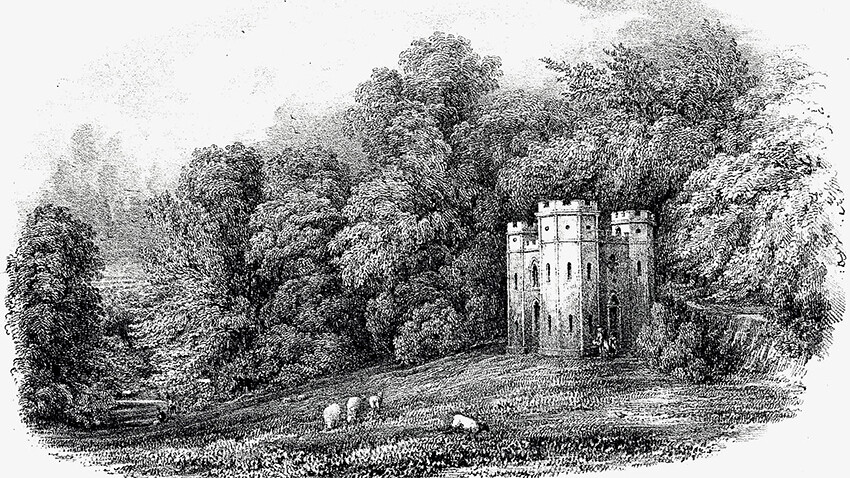
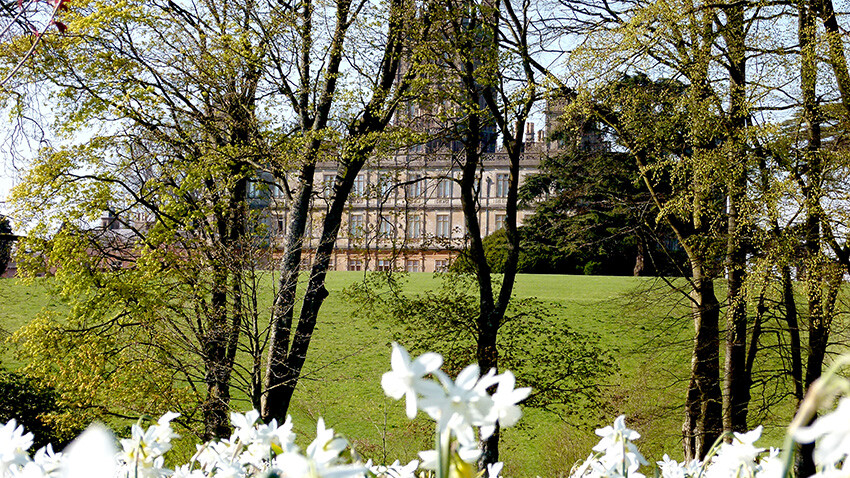
- Christmas
- Community
- Dogs & Horses
- Egypt & Tutankhamun
- Entertaining
- Farm
- Filming
- Gardens
- History & Heritage
- Daily Life
- Royalty
- Cooking
- Interiors
- Heroes
- Architecture
- Cars
- Conservation
- Downton Abbey
- Events
- Gardens & Landscape
- Highclere Castle Gin
- History
- Planes
- Restoration
- Stories & Books
- Uncategorized
- Visitors
- Wildlife
70 Comments
This was most informative and the photographs of the Highclere long-case clock are wonderful. Thank you for sharing this TIMELY post.
-
I have no need to check the time in the early evening l have a Labrador that will come and tell me it’s half past six and time for her evening meal This seems unaffected by seasonal time changes.It’s fairly accurate as well Question is how does she know
Most interesting Lady Carnavon. Well done.
Good morning Lady Carnarvon:
Wonderful article to read and learn from. Thank you for writing on this.
Regards, Corinne
Old clocks are truly wonderful machines to behold, not only as works of art but because of their function as well. We always treasure items that have more than one purpose.
Love this! Works of art with practical & such significance at the time (no pun intended!) and now. We take so much for granted these days - the simple fact of knowing what time it is - we can thank these wonderful, brilliant inventors who strove for excellence & beauty.
Dear Lady Carnarvon:
Thank you for this Monday's blog.
For whatever reason, I received the same twice.
Until next time, I wish you well.
Perpetua Crawford
Dear Lady Carnarvon:
Thank you for this Monday's blog.
Again, for whatever reason, I received the same twice.
Also, I have not received the "Leave a Comment" replies and responses.
If possible, please re-send the complete format.
Until next time, I wish you well.
Perpetua Crawford
Hello, your clocks are wonderful, the sound of the chimes must be beautiful. Have a nice day Bonjour, vos horloges sont merveilleuses, le son des carillons doit être magnifique. bonne journée
Fascinating Lady Carnarvon!
Thank you for sharing this information today. I so enjoyed reading today’s blog.
I love old timepieces. We should all be grateful for the gift of time and the makers who allowed us to measure it passing. Your writing is such a gift. Thank you for sharing this.
Lovely the pictures of time keeping and did you and lord Carnarvon have a wonderful weekend and Happy Easter to you and lord Carnarvon and staff at Highcelere castle and lam fan of Downton Abbey and lovely highcelere castle
We keep time with 6 antique clocks we collected while living in Germany with the US Army, as well as one inherited with my husband's parents home. It gets quite noisy on the hour and half hour, when they all start chiming. Our youngest (4 year old) granddaughter gave them all names when she started talking. The tall clock is called 'Scary clock', we presume because of its big, loud, booming chime. The mantle clock with the Westminister chime is called the 'musical clock'!
I am amused by the very minor 'mistake' made in the filming of the Downton episode where they stood in silence as the clock chimed eleven o'clock at the end of the war. The clock they focussed on as chiming wasn't a chiming clock, as it only has one key hole!
Super article, thoroughly enjoyed it from start to finish. Very informative about your beautiful timepieces. .
Another very interesting read thank you
I am quite stunned, Lady Carnarvon, that at 11 a.m. Eastern time zone in the United States (I live in Winchester, Virginia) that as I read this very interesting post, I scroll down and find ZERO comments! How does THAT happen, or has some malfunction mysteriously happened with my computer? I am usually way down on the list of comments if I decide on that day to write to you. I find this post to be very interesting, and I agree, there is definitely something very reassuring about the steady movement and sound of an old-fashioned pendulum. I faithfully read your blog every Monday morning and greatly look forward to it. I definitely want you to know that ... that you are loved and appreciated. I always love the photos that you post, and I want to express to you my appreciation.
Hello Lady Carnarvon
Spare a thought for the clock man at Windsor with over 400 to adjust twice a year.
He feels uneasy in one area as it is a bit spooky.
In the 18c a gentleman of some substance would have a sundial in his garden.
I have one but now needs the sun to make an appearance.
Have you seen the one at Hampton Court? Cost about £80k with all that delicate engraving undertaken when the original one was replaced.
Carry on Highclere.
Fascinating!
Lady Carnarvon,
I am anxious to visit Highclere once again and have more “time” to enjoy your lovely home and all of those wonderful clocks. I was very excited and somewhat overwhelmed when taking in so many historical pieces on our first visit. Hoping to get back there soon!
Fondly,
Vicki
From Colorado
Lady Carnarvon,
Thank you for this lesson on timekeeping. It amazes me how people can even figure these things out! Not my gift, for sure! I hope you have a lovely Easter!
One of my passions, instilled in me by my late father, a captain in the merchant marine. I helped to bring a televised version of Harrison's story to the small screen.
Very interesting. If you like unusual clocks, check out The Great Clock at Thomas Jefferson’s Monticello.
Lovely the pictures of time keeping and you and lord Carnarvon have a wonderful weekend and l am fan of Downton Abbey and lovely highcelere castle thank you for send me your email and happy Easter to you and lord Carnarvon and your staff at highcelere castle
Dear Lady Carnarvon, I enjoy your blogs and look forward to them every Monday morning here in rainy Oregon. I'm fascinated by clocks and loved the clock rooms at the British Museum on my one and only trip to England in 1975. I'm sure you are familiar with the film, "Longitude" with Michael Gambon as John Harrison and Jeremy Irons as the 20th century researcher trying to duplicate Harrison's efforts.
Best wishes,
Carol Giantonio
Eugene, OR
Lovely story.
Dear Lady Carnarvon,
Like most people I never really thought much about time and clocks while growing up. The big thing I remember is my Mom telling me to be home when the street lights came on. We didn't realized this happened a little earlier each night. I have a clock in every room in my home. I have to know what time it is. On my first visit to the British Museum I was amazed by the timepiece display. I have never really looked at "time" the same since. I am sure Highclere has a number of beautiful clocks. Again thank you another informative post. My history lesson continues. Take care.
Susan
Loved the little clock history lesson. I have three long clock pendulum clocks but none
are nearly as accurate as those clocks from 300 years ago. The clocks speed up or slow down with variations the the temperature. I think the metal pendulums tend to expand in warmer
weather and slow the clocks down and likewise speed up when colder.
I LOVE THE GRANDFATHER CLOCK , THANK YOU FOR SHARING . HAPPY EASTER TO YOU ALL .
Fascinating but if your dining room clock is 350 years old it would have been made around 1674; prior to John Shelton's birth?
I have several old wooden pendulum desk clocks inherited from Great-Grandmother, circa 1870's. To me, there is nothing more calming, late at night, than the rhythmic ticking of these clocks.
Fascinating!!!
What a marvelous piece of writing, Lady Carnarvon! I find the history and intricacies of time measurement and clockmaking absolutely fascinating. Truly, we stand on the shoulders of wise giants, don’t we? I warmly recommend a novel that has old-fashioned clockmaking at the heart of its story: The Dean’s Watch, by Elizabeth Goudge.
Happy Easter to you and Lord Carnarvon, as well as to the whole Highclere team. With best wishes from Glenview, Illinois, where the daffodils are starting to bloom.
Laura Barger
There ie something romantic and ‘timeless’ about pendulum clocks. My husband bought me a grandfather clock for our wedding anniversary. It stands in our entrance hall and chimes every fifteen minutes and I have to wind it up every seven days. It gives me great pleasure to have this lovely timepiece in the house. I also love small carriage clocks which need winding as well, they have such a delicate tinkle when they strike the hour. What a joy they are!
Carolyn Dear, Montreal, Canada
Thank you!
I missed that comment!!
I do agree - morning and evening they are very timely!
Amazing how well it works .. unlike many things made today
It is a very peaceful sound
You are very acute!!
It is because I was having meetings about car parking in the rain and absent rather too long from my desk ! Apologies to all..
I always hope visitors will arrive and then foregt about time whilst they are here and just enjoy the time ... sometimes there should be no hurry
It is beyond me too!!!!
How amazing..
I think I forget sometimes how important it was to measure time
There are some lovely clocks
Happy Easter
Thank you - and Happy Easter
they are a joy - I agree
My maths was pure fiction !!! Now corrected thank you to c 280 ..
I love the article. I am also a horologist you might say. I have many different clocks all over my house from grandfather clock to cuckoo clock, wall clock, carriage clock and crystal clock. I even learned a little history about clockmaking that I didn’t know, but really appreciated. Thank you, my Lady.
MY DEAR LADY CARNARVON,
GOOD EVENING. LOVELY POST MILADY.
HAPPY EASTER FROM BRAZIL FOR YOU ,MILORD AND ALL YOUR STAFF.
CHEERS.
VILLA ALEMÃ
RIO CLARO-SP
BRAZIL
Happy Easter Lady Carnarvon, and thank you so much for the fascinating history of the long clock at Highclere and how these clocks were invented. What would we do without clocks? I prefer the traditional clock and watches to the digital ones. They have more character, beauty and lovely sounds.
This reminds me of one my father's favourite comments. " Time and tide wait for no one ". This was a lovely article as usual, Lady Carnarvon. I hope you and your family have a happy Easter.
Mary L. Mantel
Lady Carnarvon.........First, I want to wish you, Lord Carnarvon your family and staff a a wonderful Easter. My parents were the first in my family to buy a long clock. It was about 30 years old when my parents died. I was fortunate to inherit the clock. About 15 years later it stopped due to wear. When it stopped, it felt like,in a way my parents died again. One day I will replace the works and hear that beautiful sound again. Love your clock in the dining room.
I live in Uganda and time is very relative here. When you plan a meeting at 10 am, the person might show up at 12 noon. In the beginning was very irritating, because I'm from Belgium, where time has another meaning. After a while I got used to it. I completely adapted when my wife told me an old Ugandan proverb. "You, people, you have a WATCH, We, Ugandans have TIME"
Fascinating.
Thank you!
Time is of the essence...and yesterday I missed the Monday blog as it was a national holiday here and I was watching the Independence Day parade. Came by a bit late for this fascinating history about the clocks and time. I do remember seeing the grand tall clock in the dining room during my 2015 visit to Highclere, really lovely. We will change the hour on Sunday morning: "Spring ahead"! So how many clocks at Highclere will need adjusting, it will "take time", yes ?
Have a most joyful and sunshine Spring and a Happy Easter to you and all at Highclere!
Thank you for another excellent piece. I very much enjoy reading about long case clocks and navigation. Our longcase clock at home was made by Joseph Jackman on London Bridge circa 1700 and our those in our business premises are in what was once the home of William Gilberd who discovered that the earth is a giant magnet leading to the magnet as part of a compass revolutionising the lives of sailors. On heritage Open Days I have been able to demonstrate how he did this by rubbing a piece of amber on a piece of silk and other little reproductions of some of his experiments such as a home made version of his Terrella. People are fascinated by time and navigation.
Thank you for another excellent piece. I very much enjoy reading about long case clocks and navigation. Our longcase clock at home was made by Joseph Jackman on London Bridge circa 1700 and those in our business premises are in what was once the home of William Gilberd who discovered that the earth is a giant magnet leading to the magnet as part of a compass revolutionising the lives of sailors. On Heritage Open Days I have been able to demonstrate how he did this by rubbing a piece of amber on a piece of silk and other little reproductions of some of his experiments such as a home made version of his Terrella. People are fascinated by time and navigation.
Love this blog on time! As an educator and lover of history it was so good to learn some details and people I did not know about-and as always so fascinating to learn of something so ordinary but so intrinsic to all our lives even today! FHA you!
Thank you .. what is FHA?
We are also springing forward sort of! It is very muddy
Every day is a new day
I find the sounds very settling
Thank you very much
Dear Lady Carnarvon! Your wonderfully contagious fascination with history allows me to offer here one exceptional way our ancestors told time: HOROLOGIUM FLORAE, invented by Carl von Linné, Carl Linnaeus, a Swedish biologist and physician(23 May,1707-10 January 1778)
Just a small sample:
5 am: Poppy(Papaver), Rosa Canina,Chicorium intybus
6 am: Dandelion (Taraxacum official)...
...9 am: Lencanthenum,Genciana, Calendula....
at 12 NOON Passiflora opens the patels
at 13 o'clock it is the beginning of the closing, with Pulmonaria Officinalis...
...15 o'clock Calendula and Curbita close their flowers...
etc., etc, etc
I hope you'll find this amusing.
Thank you again for the story you brought us today, which jolted my memory.
Have a wonderful Spring day!
Elizabeth
Elizabeth Goudge is an author well worth reading!
What a timely reminder of her literary works.
Thank you
This was brilliant! What we take for granted in today’s world with digital timepieces everywhere, a few analog clocks or watches, and the smaller number of “newer” pendulum pieces of varying sizes made to replicate the ancient - and very precious- pieces noted by Lady Carnarvon. I cherish my old Mora clocks, date assumed to be early 1800s, with a rustic and very hand-made, home made case and clockworks. And she has her pendulum with two heavy old weights. Ah, the stories these old pieces could tell! ️

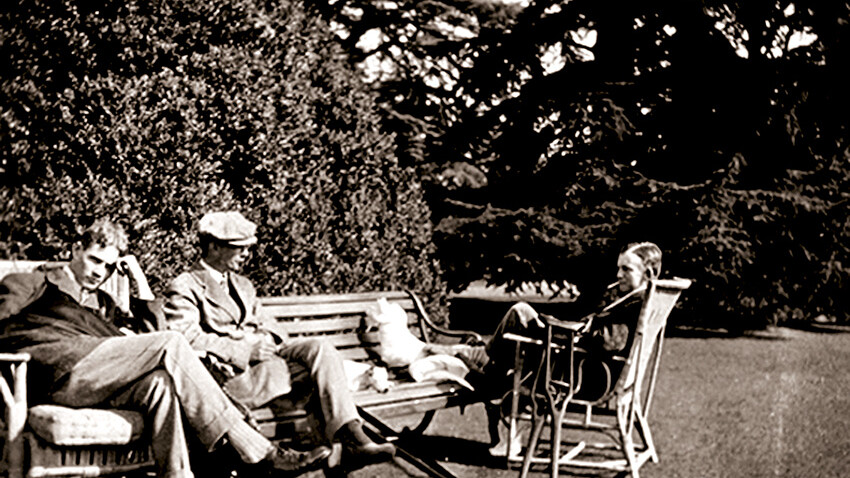
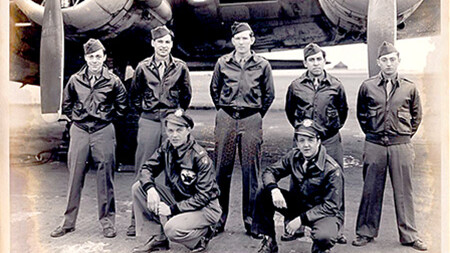

Lady Carnarvon,
I am frequently amazed at your very interesting insights into history of the most ordinary things we take for granted today - such as the mastery of time-keeping! This story of very young men and their achievements is inspirational to pass along to our children today. We take so much for granted now, and thank you for your history lessons! Have a wonderful week!
Martha